
Rookie Awards 2022 | Roy Bennett 3D Game Art Showcase
This entry showcases my skill progression and education creating 3D environments and props throughout 2021. These were all projects created while studying online at Think Tank Training Centre. I have a passion for creating cinematic set pieces that tell a story and convey emotion--I hope you enjoy them as much as I do!



MJ's Apartment was created for my Advanced-term Final project at Think Tank Training Centre Online. I was responsible for all aspects of the project and rendered it in real-time using Unreal Engine 4. This project helped test myself in managing a very dense scene while keeping all assets at a consistent level of quality.
When creating MJ's Apartment from Dennis Chan's concept, I knew I wanted to create a powerful cinematic. Something that would feel emotional, accented with the right music and camera work to really bring the viewer into the space. Every detail was extremely important in order to faithfully recreate the concept and highlight Mary Jane's character.
I also wanted to pay homage to the cutscene from Insomniac's Spider-Man where Peter is cooking in the kitchen of MJ's Apartment. This meant creating a believable looking New York studio sized kitchen. I studied the cutscene where I believed the appliances would be located based upon Peter's actions and was able to come up with a design.
Every detail mattered when trying to visually capture the character of Mary Jane Watson. Dennis' concept tells a wonderful story of our beloved MJ, showcasing the busy and chaotic lifestyle of a New York journalist. Her thoughts and toil scatter across the walls and floors in the form of post-it notes, clipboards, binders and papers. This apartment is a terrific representation of who Mary Jane is and I wanted her personality to shine through every corner of the space with as much detail as possible.

Most props that I knew would be close to the camera in the cinematic video were all relatively high poly and treated as hero props. While other smaller props such as books and magazines were much lower poly and optimized further by using texture atlases.
Organic props such as the Spider-Man doll and sofa were typically started in Maya before being taken into ZBrush for sculpting in details.
All clutter assets such as books, magazines, pictures, post-it notes, papers, etc. were created using prop/texture atlases to stream line the process of creating multiple assets at once using one material.
My skills in Substance Designer are still limited, so instead I chose to use Substance Painter to create my tileable textures.
Lighting the scene was a continuous iteration throughout the entire project. I wanted to achieve an ArchViz style lighting setup and explored using GPU Lightmass Baking for faster bake iterations and softer/deeper quality shadows. All the lights were baked with the exception of a few movable lights to help certain areas pop for the cinematic.


Letters To Kowloon was created for my Intermediate-term Final project at Think Tank Training Centre Online. I was responsible for all aspects of the project and rendered it in real-time using Unreal Engine 4. This was my first environment where I was able to put into practice all the skills I developed such as baking assets, dynamic lighting setups and texturing within Substance Painter.
When creating Letters To Kowloon from photographic reference, I struggled a lot with the lighting and texturing. Still being very new to the process, it was a lot of trial and error until I started to get things looking right. In hindsight, this project motivated me to want to do and learn a lot more for my next project. I felt that my skills were improving and things started to click a little faster--I just had to keep pushing myself.
Another challenge was trying to recreate the traditional Chinese writing. To do this, I needed what was in the photo to be translated so that I could grab an image of the translation and trace over it--luckily a classmate of mine was from Hong Kong and assisted with all the translations and helped make sure that what I was drawing in Substance Painter was correct. Thanks again for your help Constance!


The Sci-Fi Hand Gun was created for my Intermediate-term hero prop project at Think Tank Training Centre Online. Choosing a gun was a lot of fun but also quite challenging. I was able to learn a lot about baking and texturing within Substance Painter--as well as rendering within Marmoset Toolbag. This was my first introduction to a high-low poly game asset workflow.
When creating the Sci-Fi Hand Gun from Heng Z's concept, I remember finding it difficult aligning the perspective at first. It required more grey boxing and scaling to align with this quarter-angle perspective. Another issue was trying to find the right bevel size for the edges so they appeared somewhat rounded but not to sharp when baking. Unfortunately, that was the biggest let down with this piece--baking the high poly onto the low, my edges were showing some artifacts and aliasing that may have been fixed with a bigger bevel on some of the edges of my low poly.
The low poly was at 19,557 triangles. I used one 4k texture map to get the most quality as possible for the close up detail shots and text on the weapon. Cutting and laying out the UVs was important as well to efficiently texture the asset. Below are some images of the UV layout, texture maps and wireframe of this asset.


Milqui was created for my Foundation-term final project at Think Tank Training Centre Online where we had to recreate a CG render from a 2D concept. This project has become very important to me, as it helped me believe that I could become a 3D Artist and pursue this incredible industry. I developed my skills in 3D modeling, lighting in CG, creating realistic textures, UV layout, and rendering in V-Ray. This project awarded me a scholarship from Think Tank Training Centre and was also featured in Autodesk Maya's 2022 showcase demonstrating the new Sweep Mesh tools.
Below is a finished polish render and early block out shot of the piece.













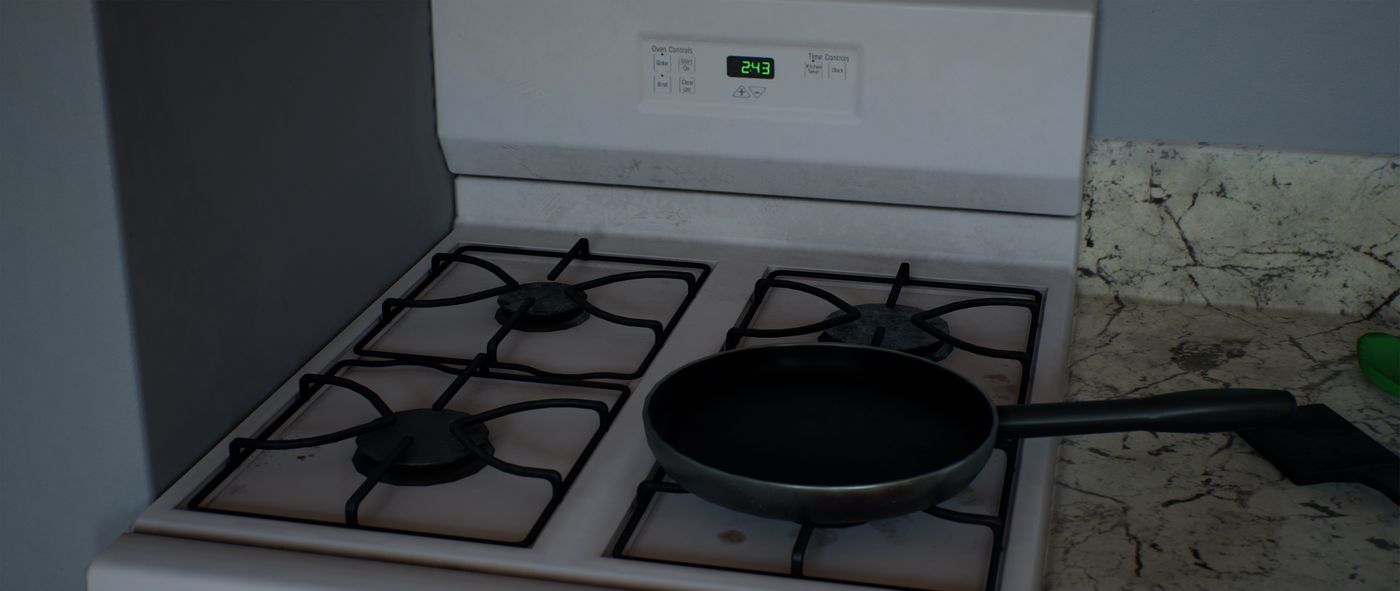

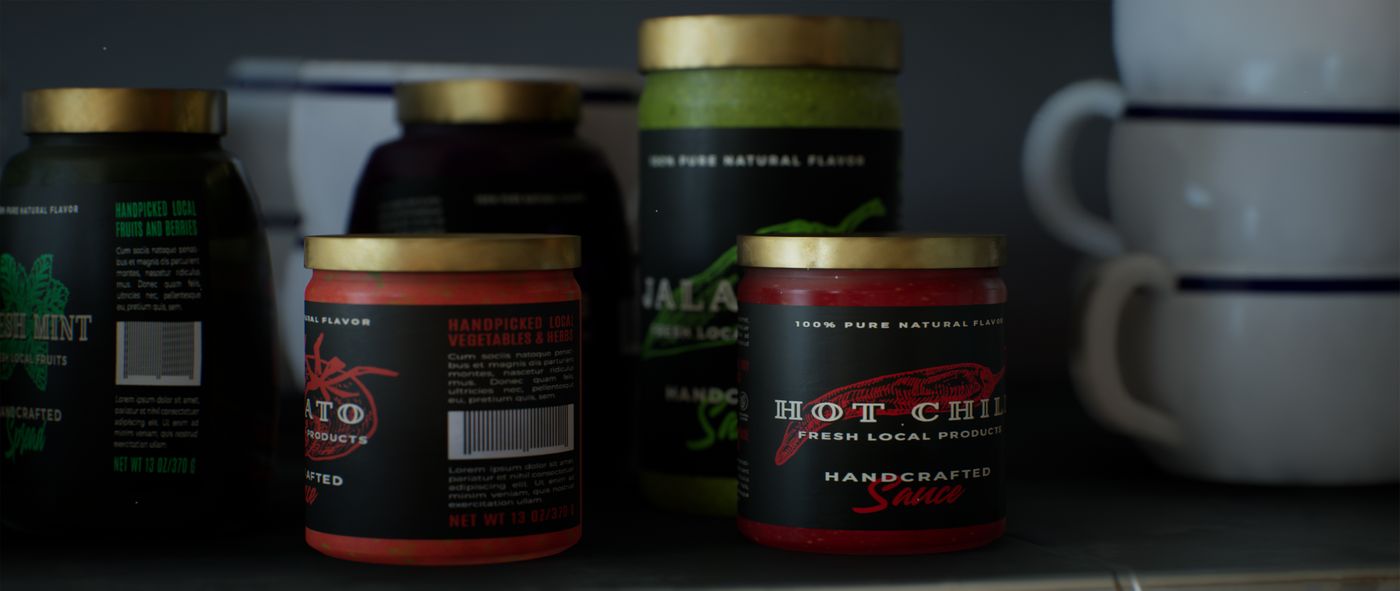





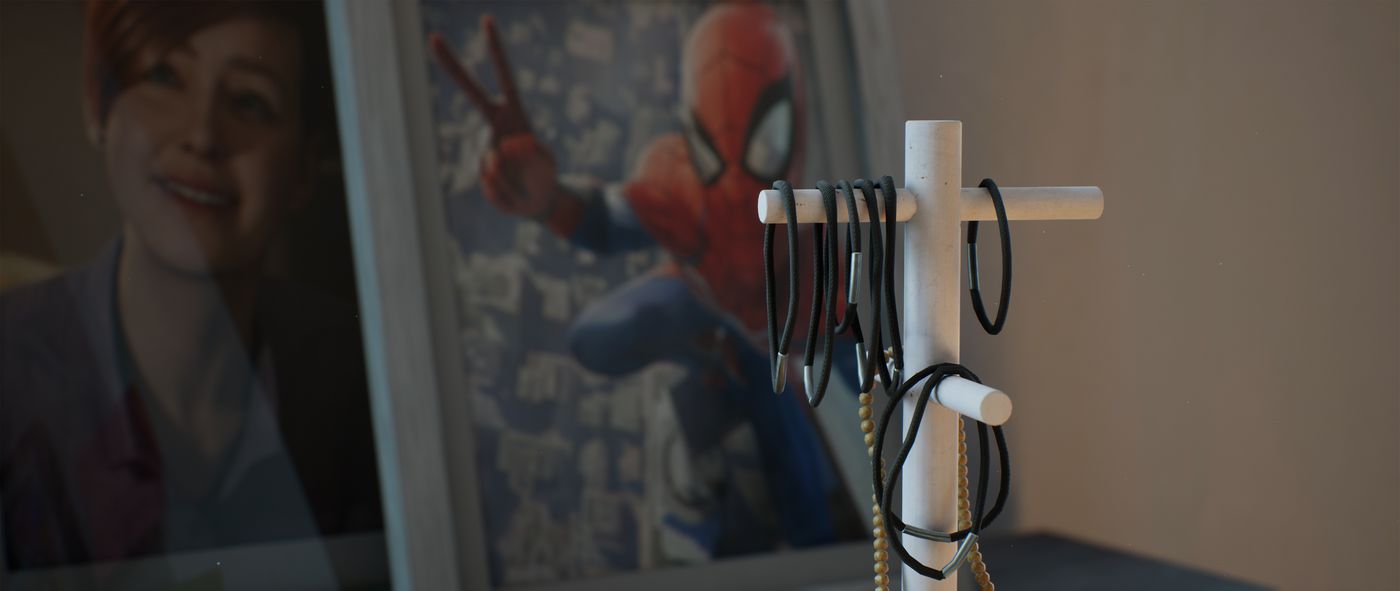
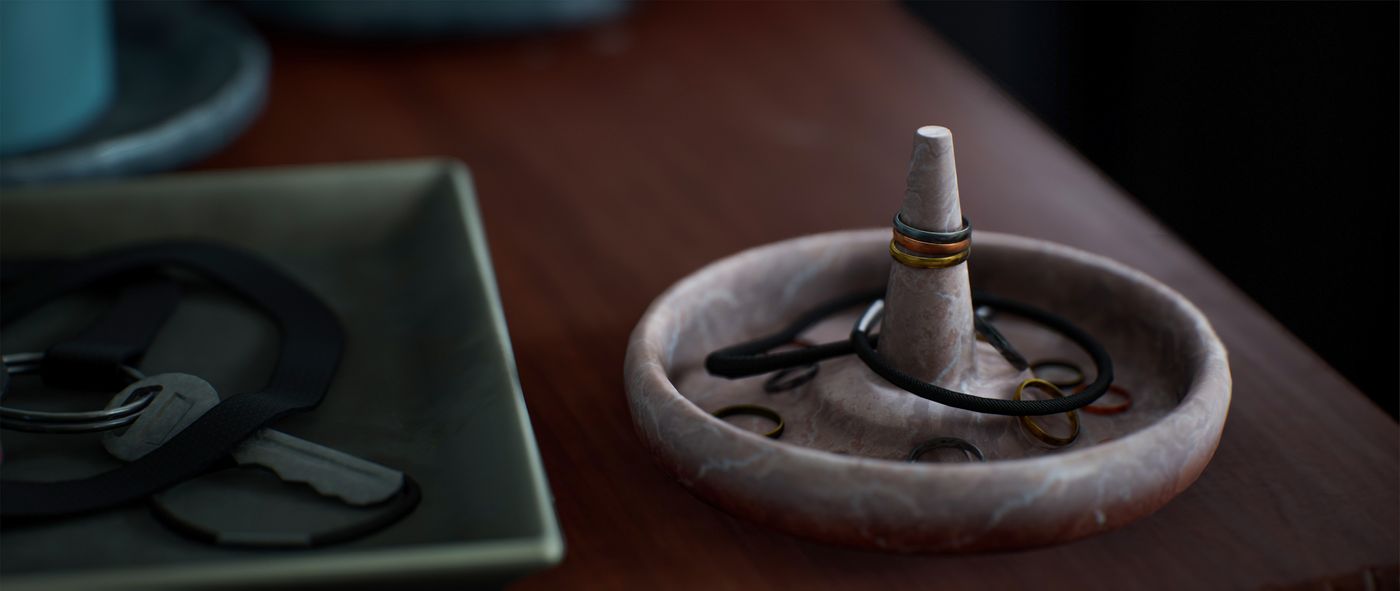






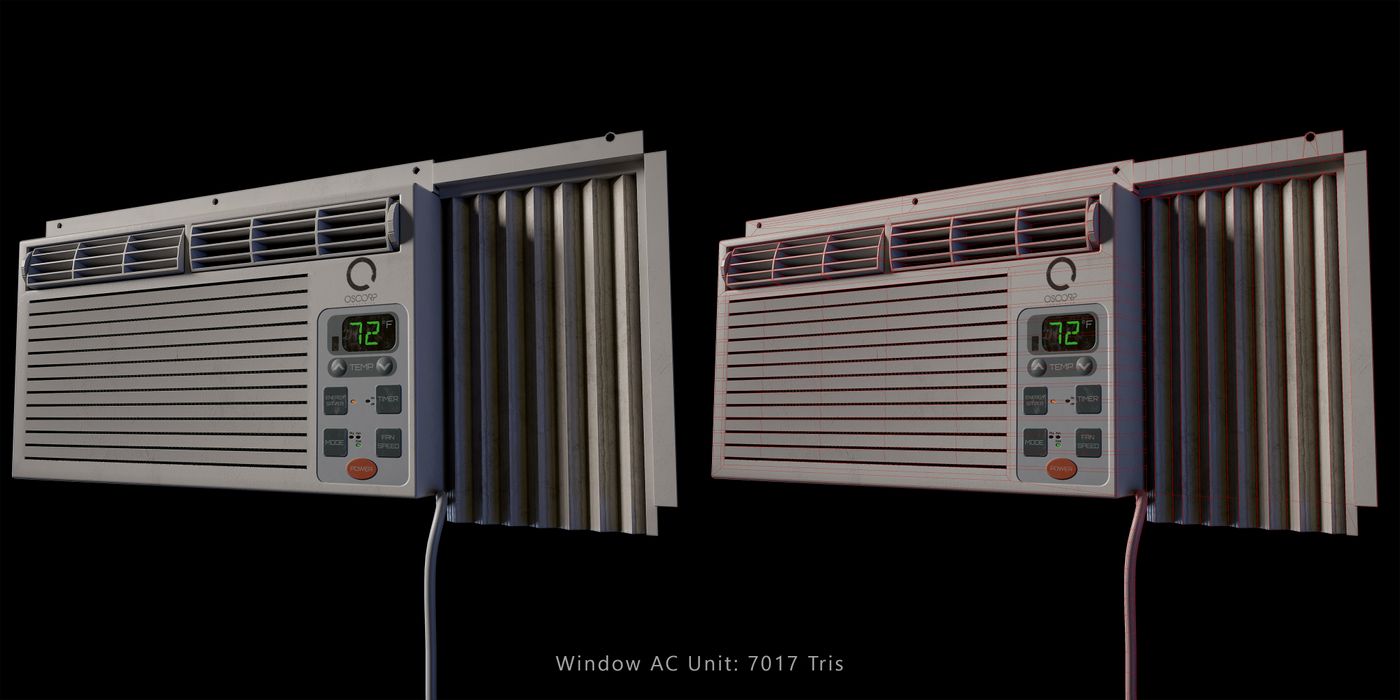











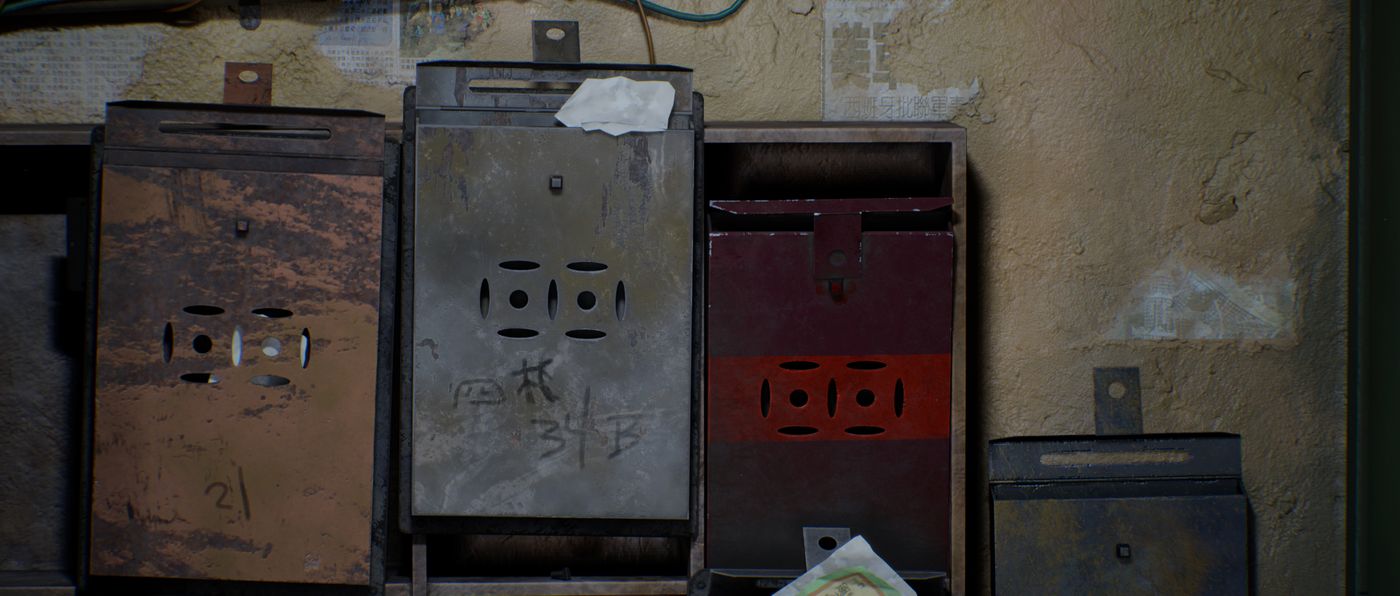












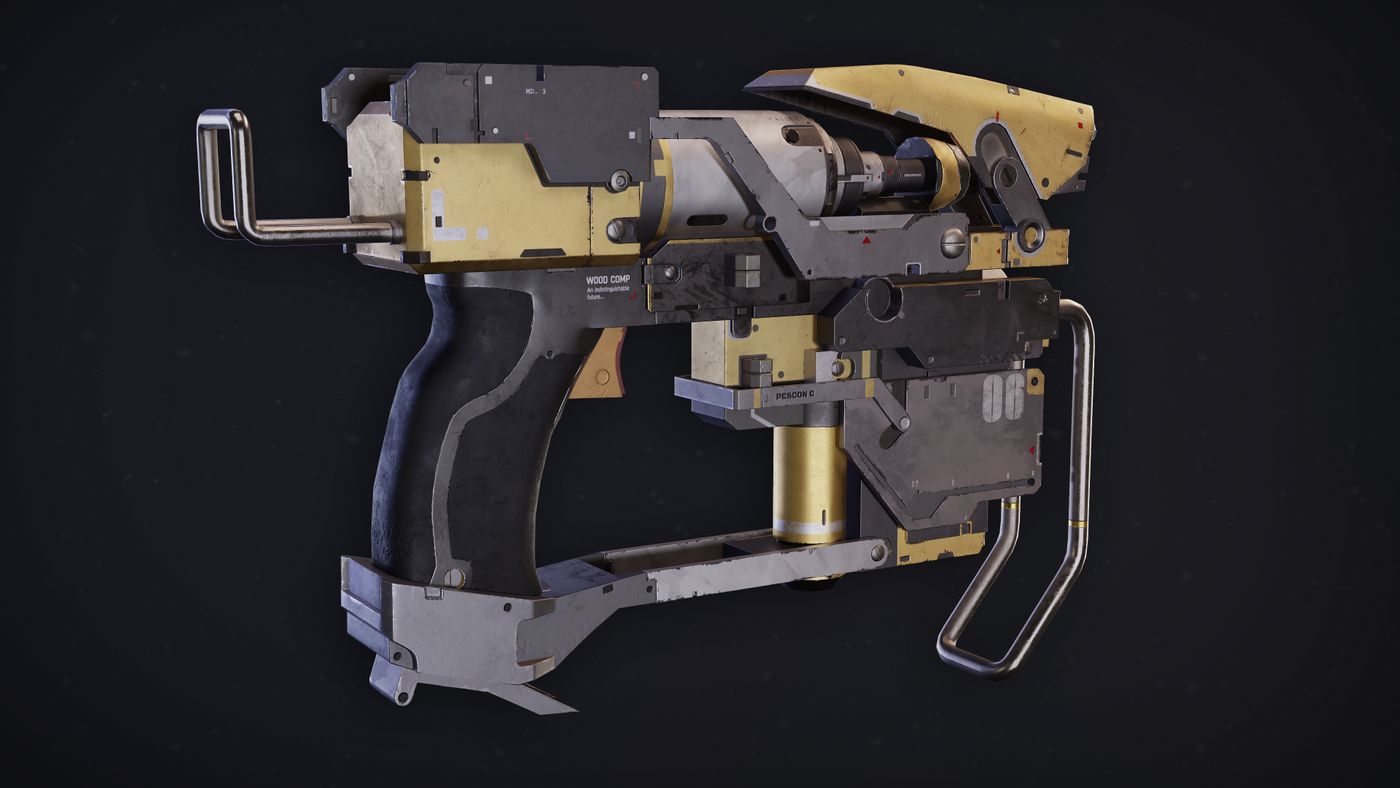



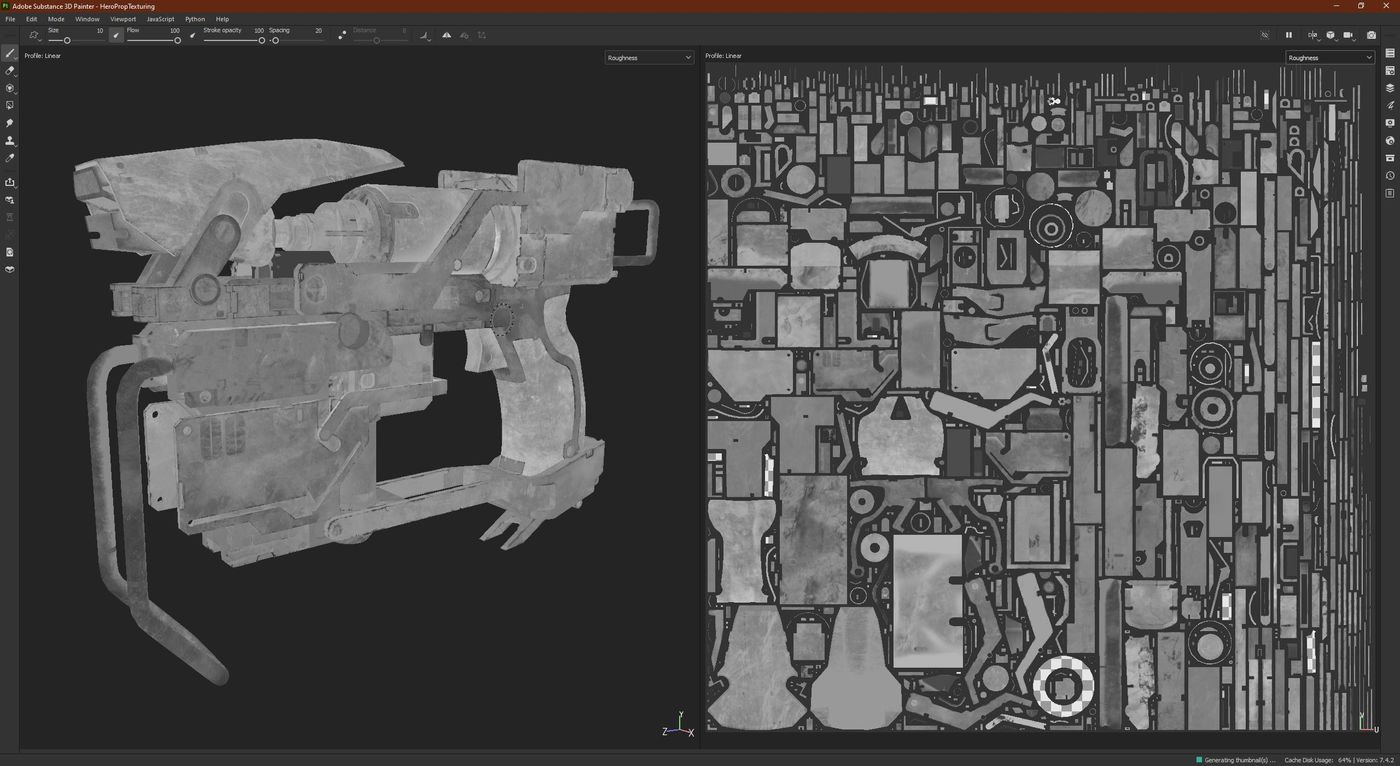










Comments (12)